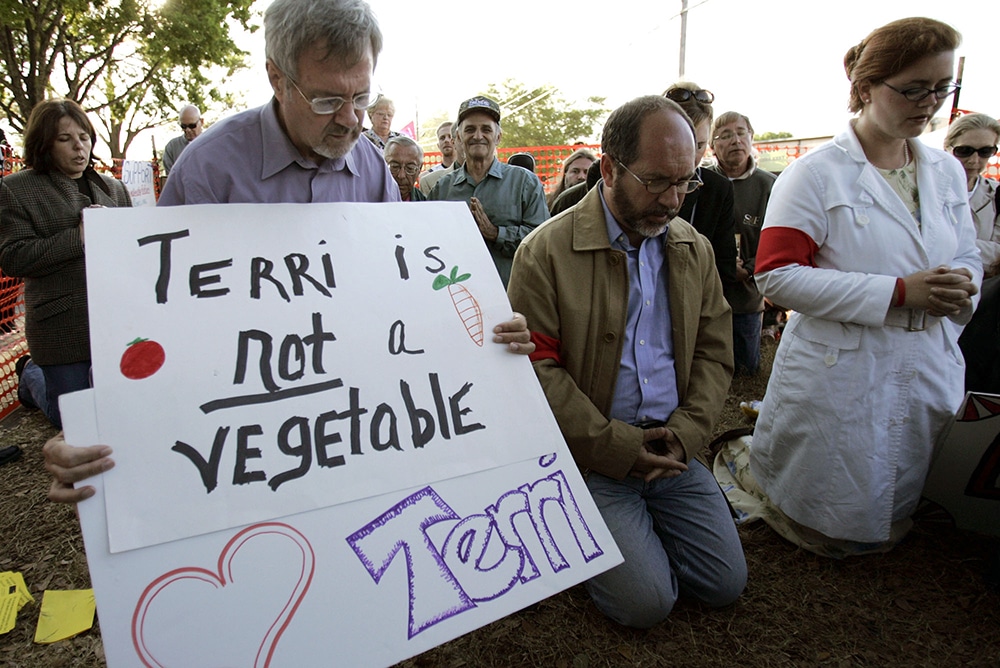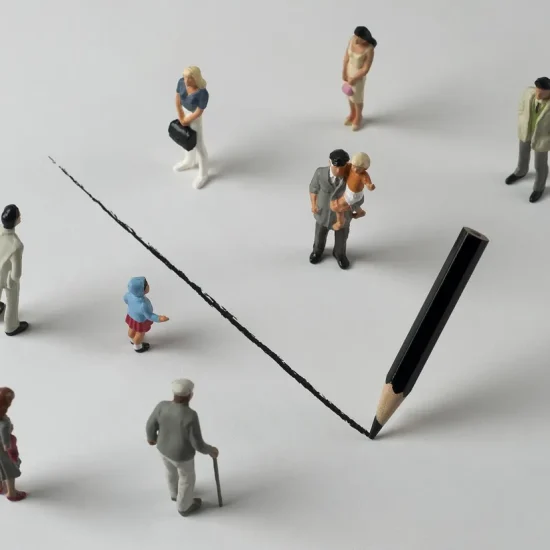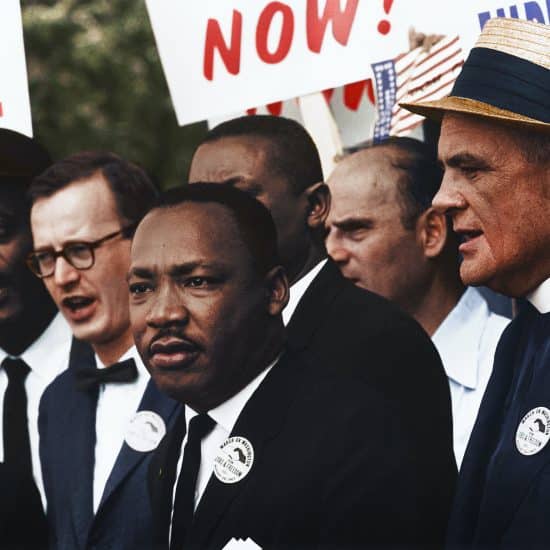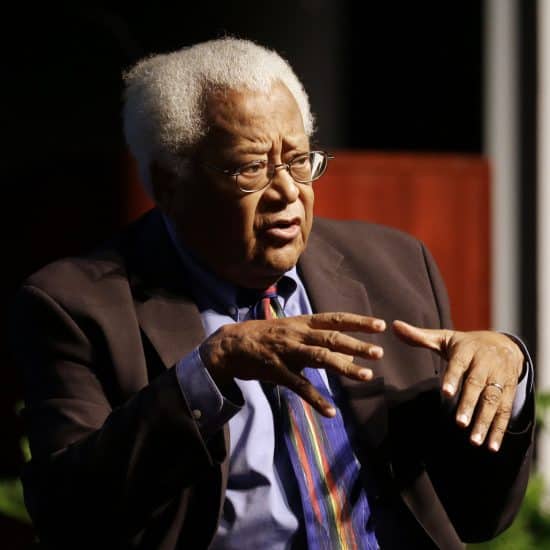

A group of supporters hold a prayer vigil outside the Woodside Hospice, where Terri Schiavo was a patient, Friday afternoon March 18, 2005, in Pinellas Park, Fla. Terri’s feeding tube was removed earlier that day. (AP Photo/Chris O’Meara)
(RNS) — Remember Terri Schiavo? She was a beloved daughter, sister and (new) wife when, in 1990, at the age of 26, she had a heart attack. Though she was revived and breathed on her own, Terri sustained significant brain damage and was deemed to be in a permanent vegetative state.
A big part of the debate that gripped the U.S. in the mid-2000s about whether to take Schiavo off of life support had to do with her Catholic upbringing. While her husband maintained that Schiavo wouldn’t have wanted to live with the aid of a feeding tube, her parents and brother said she would have agreed with Pope John Paul II, who weighed in on her case, that food and water are care, not medical treatment, and are basic to respect fundamental human dignity.
But leave those issues aside for a moment. The received view both during and after the debate over Terri’s case, especially if you thought that she ought to have her feeding tube removed, was that someone in a vegetative state essentially had the functions of a “vegetable.” This turns out to be wrong, but you can be forgiven for thinking so: after all, given the term “vegetative state” that we’ve all been taught to use.
In the 15 years since Schiavo died — an eternity in the world of medical research and technology — much has changed. And what has changed should make us totally rethink fundamental questions about patients thought to be “vegetative.”
Even before Terri died, in fact, folks who were forthright about our limited understanding of the brain and consciousness knew that permanent vegetative state, or PVS, was a sloppy and ill-defined category. In 2002, for instance, certain PVS patients were categorized as being in “minimally conscious state.” In 2006, a dramatic study found that a PVS patient could be understood to answer yes or no questions by watching the patient’s brain activity on a live scan while asking her to think about playing tennis to answer yes and walking in her house to answer no.

Rights Come to Mind by Joseph J. Fins. Courtesy image
In his 2015 book, Rights Come to Mind, Joe Fins, an attending physician and chief of medical ethics at New York Presbyterian Hospital and Weill Cornell Medical College, tells deeply researched stories of several patients thought to be vegetative but who ended up in a very different place.
One dramatic example was “Maggie,” a patient with whom Fins interacted personally. After having a stroke as a senior at Smith College, Maggie was deemed to be in a vegetative state. The mistaken diagnosis would have stuck if her neurologist had not discovered that she was trying to communicate by blinking. Studies of Maggie’s brain later showed that the “perceived fixity” model must be abandoned. Her brain was trying to rewire itself.
Fins’ research shows that cases like Maggie’s are not isolated. He cites replicated studies showing that an astonishing 40% of patients thought to be vegetative were in fact conscious. A review of the clinical evidence found that 20% of patients thought to be permanently unconscious might regain consciousness.
Fins also drew my attention to new guidelines published in September 2018 by the American Academy of Neurology, the American Congress of Rehabilitation Medicine and the National Institute on Disability, Independent Living and Rehabilitation Research. They call for better assessment and care of patients with severe brain injuries like the one Schiavo sustained, employing new diagnostic and treatment technologies.
Perhaps the most important change is that they insisted that the term “permanent” vegetative state be changed to “chronic” vegetative state.
Fins’ admirable plea is to stop treating these patients like they are hopelessly brain-injured vegetables and start treating them as the equal of any other patient. In Rights Come to Mind, Fins cites terrible stories of so-called PVS patients being neglected to the point that they are treated as nonpersons. He calls for a new civil rights movement to make sure they get up-to-date diagnoses, good pain management and the latest therapies to help them improve.
Fins is no fan of the pro-life movement or the socially conservative politics that drove much of the Terri Shiavo debate. Yet here he is, following the evidence and arguments wherever they lead him — even if it is to a place he finds deeply uncomfortable.
Indeed, though I suspect it was a bit tongue-in-cheek, Fins openly wonders whether these new findings about vegetative state mean that he and others must now promote a “culture of life.”
In response to a generous thinker, researcher and activist like Fins, pro-lifers should wonder about whether we have a moral duty to join him in his struggle for the civil rights of so-called PVS populations. We were there for Terri Shiavo and her family. Will we step up to the plate at this critical moment? There are new and influential allies to be had in the fight to protect people who have serious brain injuries.
The time to move is now.






